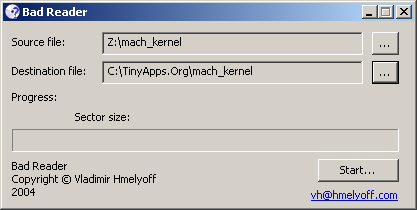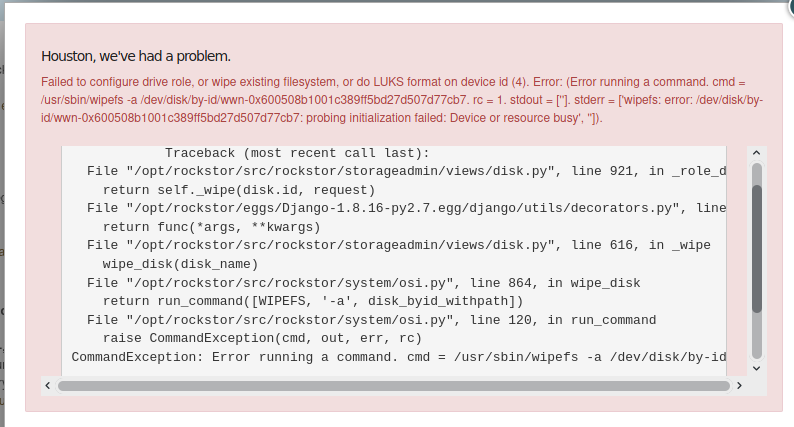
= My filesystem won't mount and none of the above helped. This ''should'' be in many distributions' startup scripts (and initrd images, if your root filesystem is btrfs), but you may have to add it yourself. Then you need to ensure that you run a btrfs device scan first: Or if one volume of a multi-volume filesystem fails when mounting, but the other succeeds: In some cases useful info is found in syslog - try Missing codepage or helper program, or other error Mount: wrong fs type, bad option, bad superblock on /dev/sdd2, If you have labelled your filesystem and put it in /etc/fstab, but you get: = Only one disk of a multi-volume filesystem will mount = Then you should try using btrfs rescure zero-log (see ]). ? btree_read_extent_buffer_pages+0x76/0xbc One of these may work successfully.įinally, '''if and only if''' the kernel oops in your logs has something like this in the middle of it, Second, try mounting with options '''-o recovery''' or '''-o ro''' or '''-o recovery,ro''' (using the new kernel). If you have your kernel on a btrfs filesystem, then you will probably have to find a recovery disk with a recent kernel on it.
#BTRFS WIPEFS UPDATE#
= I can't mount my filesystem, and I get a kernel oops! =įirst, update your kernel to the latest one available and try mounting again. Please attach files (like logs or dumps) directly to the bug and don't use pastebin-like services. If you include kernel log backtraces in bug reports sent to the mailing list, please ''disable word wrapping'' in your mail user agent to keep the kernel log in a readable format. Please use '''btrfs-progs''' somewhere in the bug subject if you're reporting a bug for the userspace tools. For quick questions you may want to join the IRC ''#btrfs'' channel on libera.chat (and stay around for some time in case you do not get the answer right away). Please '''report bugs on ''' (requires ) setting the component to Btrfs, and '''report bugs and issues to the ]''' you are ''not'' required to subscribe). You can view and copy the source of this page: Please set and validate your email address through your user preferences.

The action you have requested is limited to users in the group: Users.You can add and entry to /etc/fstab to easily mount the filesystem and you’re done.You do not have permission to edit this page, for the following reasons:
#BTRFS WIPEFS ARCHIVE#
$ sudo mkfs.btrfs -label archive /dev/mapper/archive_cryptĪt this point we’re actually pretty much done. We could also have used /dev/urandom but the above technique is much faster. $ openssl rand -hex 32 | openssl enc -chacha20 -in /dev/zero -pass stdin -nosalt | sudo dd if=/dev/stdin of=/dev/mapper/sda_crypt bs=4096 status=progress This and other side-channel leaks can be mitigated by simply wiping the contents of the encrypted device. While the device is now encrypted, there is a possible leakage of metadata such as used blocks as an attacker can discern used vs unused blocks by examining the physical drive. You can test everything works so far by opening and loading the LUKS device: $ sudo cryptdisks_start archive_crypt discard should be used if the underlying device is an SSD. The noauto, means not to attempt to load the device automatically upon boot. The none parameter specifies that no keyfile is used and the system should prompt for an encryption passphrase instead. It will appear as /dev/mapper/archive_crypt when the device is mapped. The archive_crypt is the name for the mapped device. Where the UUID is obtained through lsblk /dev/sda -o UUID or a similar command. Add the following line to /etc/crypttab: archive_crypt UUID=114d42e5-6aeb-4af0-8758-b4cc79dd1ba0 none luks,discard,noauto The next step is to add an appropriate entry to crypttab which will simplify starting the dm-crypt mapping later. The command will prompt you to enter a passphrase for the encryption and should take a few seconds to complete. This will overwrite data on /dev/sda irrevocably.Īre you sure? (Type 'yes' in capital letters): YES $ sudo cryptsetup luksFormat -type=luks2 /dev/sda This is done using the cryptsetup utility.

The next step is to actually format the drive using LUKS. Remove the -no-act flag to actually modify the disk. Assuming that the drive we operate is /dev/sda you can use the following command to remove the signatures: $ sudo wipefs -all /dev/sda -no-act This short tutorial will guide you in encrypting a drive with cryptsetup and LUKS scheme.īefore starting, if the device had previous data on it, it’s best to delete any filesystem signatures that may be on it.


 0 kommentar(er)
0 kommentar(er)
